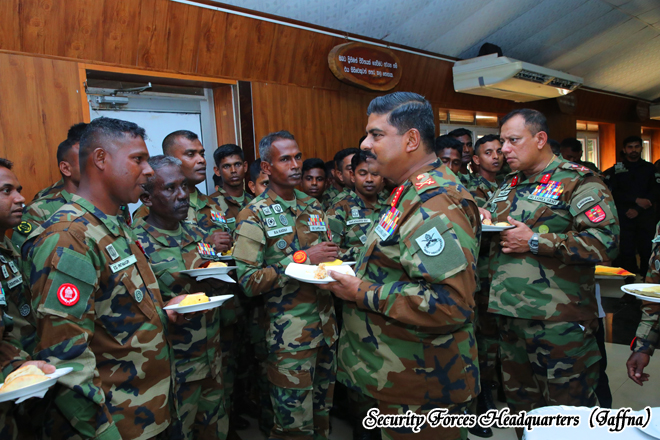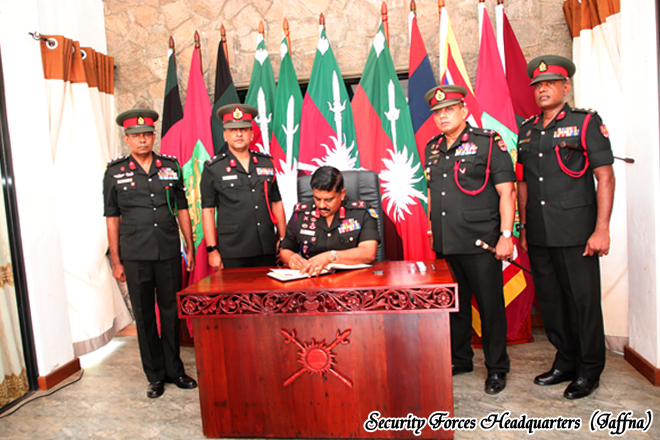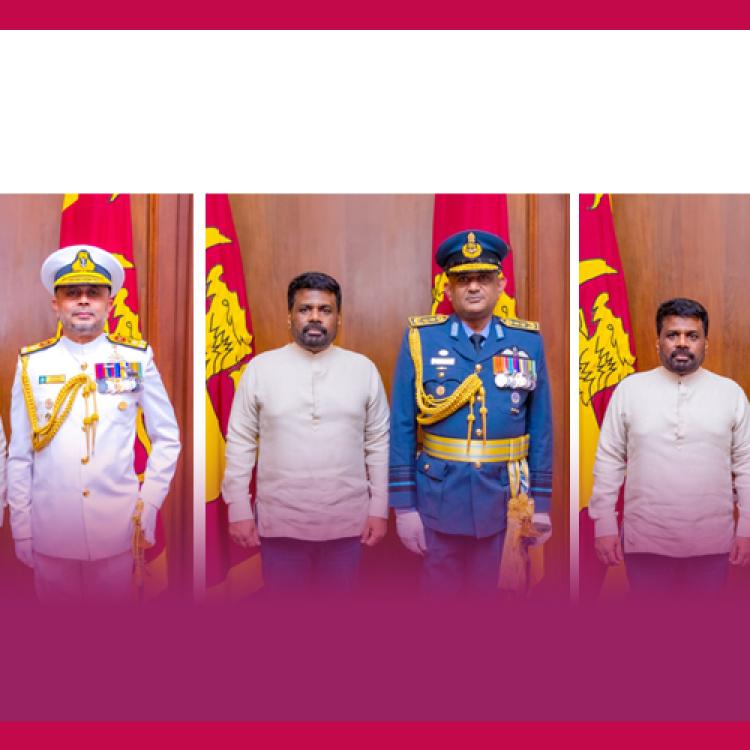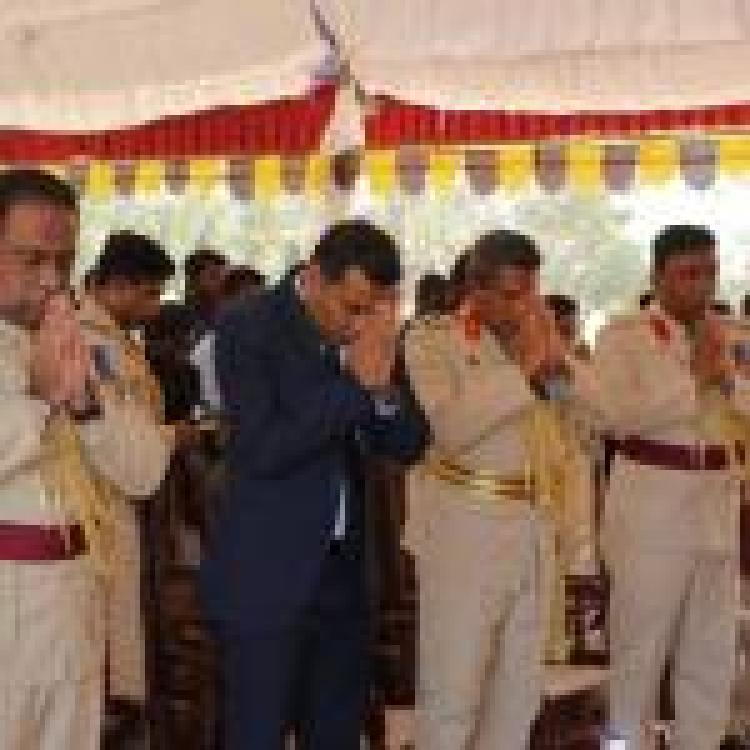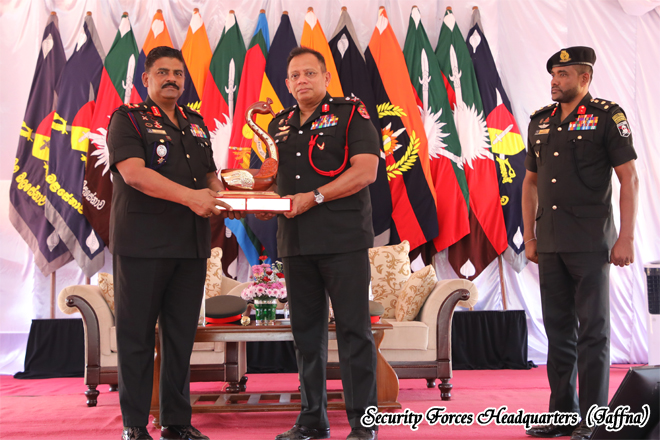
Lieutenant General Lasantha Rodrigo, Commander of the Sri Lankan Army, concluded a two-day visit to the Jaffna peninsula from 24 to 25 March, engaging in a series of military ceremonies, religious visits, and so-called development initiatives, in a trip that reinforced the ongoing militarisation of the Tamil homeland.
Upon arrival at the Security Forces Headquarters in Jaffna, the Army Chief was welcomed by Major General Y.A.B.M Yahampath, Commander of the Security Forces (Jaffna). A Guard Turnout was presented, after which Rodrigo ceremonially planted a sapling — framed by the military as a “symbol of growth and unity.” He then participated in an “All-Ranks tea session” with officers and soldiers, and signed the visitors’ book.
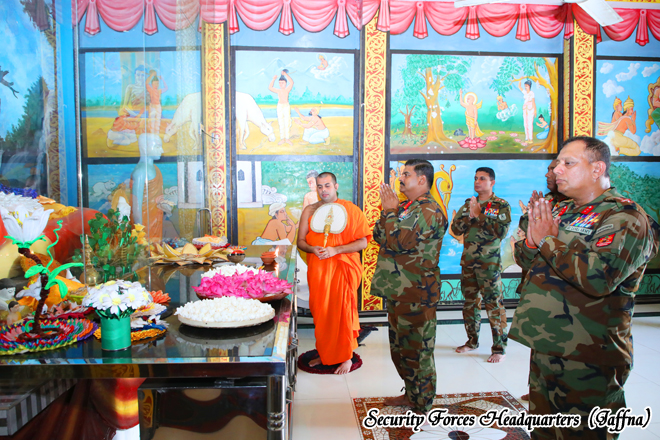
Throughout his visit, Rodrigo, visited religious institutions in the North including Sinhala Buddhist monks at the vihara at Nainativu.
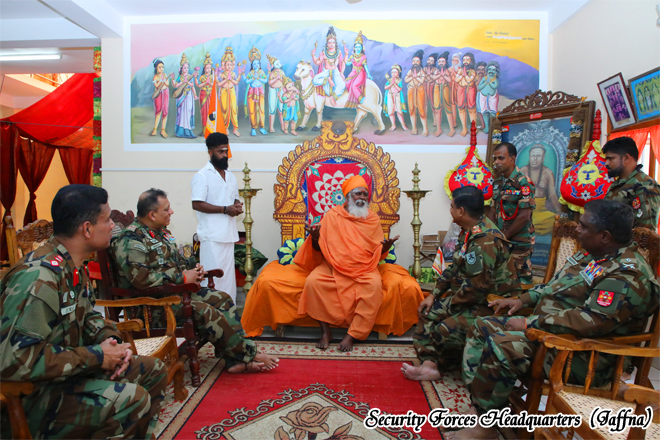
He also met with Rev. Fr. P. Josephdas Jebarathan at the Bishop’s House, and the Chief Priest Maikundal Swami Kurukkal at Nallur Kovil. While framed as gestures of harmony, such engagements have been repeatedly criticised by Tamil civil society as attempts to whitewash the army’s heavy presence in civilian and religious spaces.
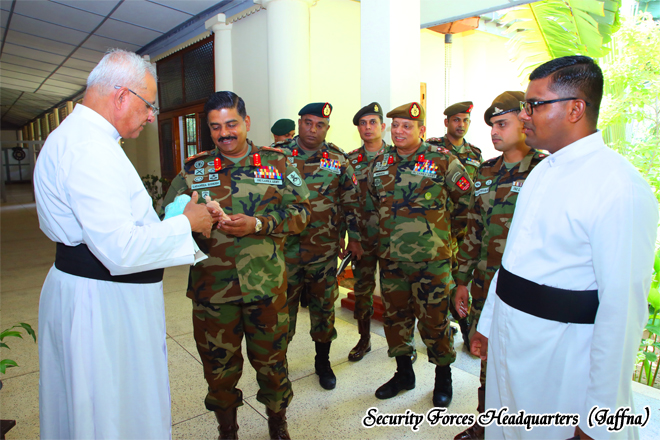
The Army Chief’s itinerary also included high-profile participation in so-called development projects, such as the foundation stone-laying ceremony at Varany Central College.
The construction, was backed by troops from the 523 Infantry Brigade and 5th Engineer Service Regiment, in yet another example of military involvement in civil life in the North-East.
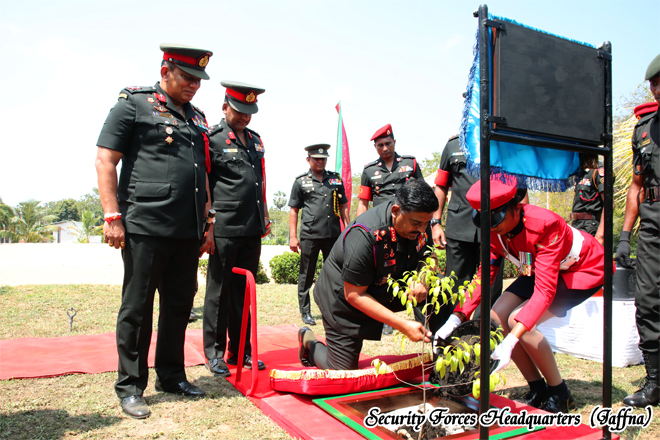
On the second day, Rodrigo inaugurated a newly constructed house for a Tamil family in Kodikamam South, funded by Imagine Compassion International Ltd. (Australia) and coordinated by Father Andrew Arul. The house was also constructed by the 7th Battalion of the Vijayabahu Infantry Regiment.
The visit concluded with a tour of the 52 Infantry Division headquarters, where Rodrigo was again honoured with military ceremonies.
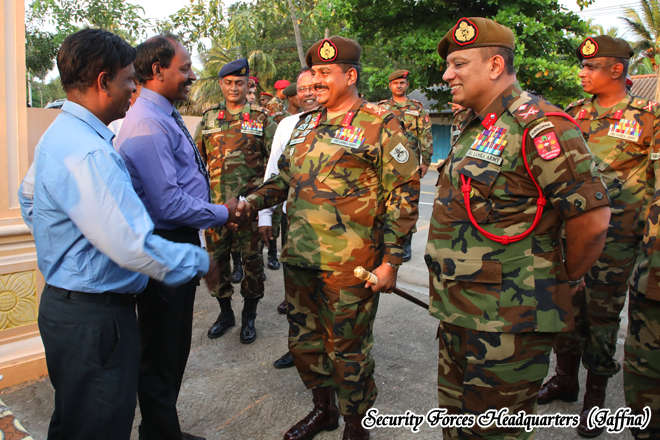
More than 15 years after the Mullivaikkal genocide and end of the armed conflict, The Tamil homeland remains one of the most militarised regions in the world per capita — with large numbers of troops stationed throughout the North-East.
Though the military often claims such visits promote reconciliation and development, Tamil civil society and human rights organisations view them as part of a continued campaign of occupation.
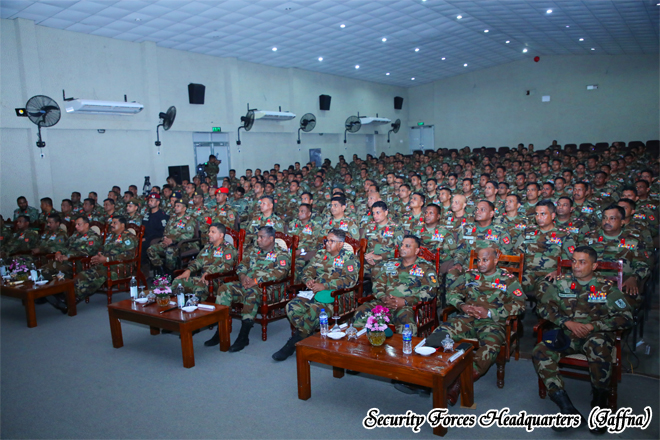
Rodrigo’s visit, like many before it, serves to reinforce a deeply militarised status quo. Despite international scrutiny and repeated calls from Tamil political leaders and survivors for demilitarisation, the Sri Lankan government continues to embed its military deeper into Tamil civilian life.
